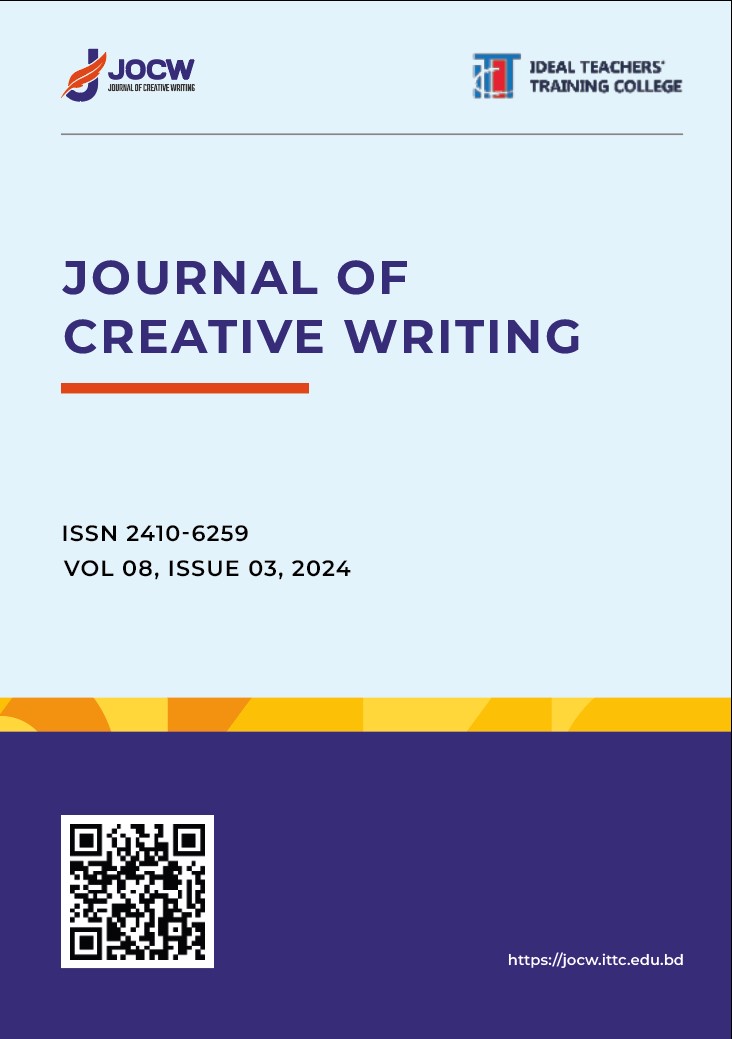Keywords
Transformational Leadership
Cultural Diversity
Bottom of the Pyramid (BoP)
Economic Empowerment
How to Cite
Abstract
The goal of the present study is to probe into the essential role of transformational leadership and diversity in culture for the successful implementation of business models aiming at the Bottom of the Pyramid (BoP).Inclusive businesses seek to alleviate poverty. This is done by integrating people from BOP backgrounds as consumers, suppliers, or distributors of companies producing goods; it cares for economic empowerment and social fairness. This research uses transformational leadership theory and cultural dimensions theory for its analysis. Leadership practices are measured, as well the impact of cultural sensitivity on ways in which people access goods and services, their level of employment or income. The results show that transformational leaderships significantly improve results: for example, transformational leadership's dimensions such as inclusiveness, innovation and transformation (enterprise). The study offers guidance to entrepreneurs and policymakers. It emphasizes the need for sustainable, scalable strategies in order to demonstrate that the economic and social impact of Inclusive business initiatives can be maximized to pay off.
References
Avolio, B. J., & Bass, B. M. (1995). The full range of leadership development: Manual for the Multifactor Leadership Questionnaire. Mind Garden.
Avolio, B. J., Walumbwa, F. O., & Weber, T. J. (2009). Leadership: Current theories, research, and future directions. Annual Review of Psychology, 60, 421–449.
Bass, B. M. (1985). Leadership and performance beyond expectations. Free Press.
Bass, B. M., & Riggio, R. E. (2006). Transformational leadership. Psychology Press.
BRAC. (2019). Annual Report. BRAC.
Bryman, A. (2016). Social research methods (5th ed.). Oxford University Press.
Fairtrade International. (2022). Annual Report 2022: The Impact of Fairtrade. Fairtrade.org.
Fridell, G. (2014). Coffee and justice: Fair trade and development. University of Toronto Press.
George, G., McGahan, A. M., & Prabhu, J. C. (2012). Innovation for inclusive growth: Towards a theoretical framework and research agenda. Journal of Management Studies, 49(4), 661–683.
Hammond, A. L., Kramer, W. J., Katz, R. S., Tran, J. T., & Walker, C. (2007). The next 4 billion: Market size and business strategy at the base of the pyramid. World Resources Institute.
Hasan, R., Ahmed, M., & Rahman, S. (2022). The role of micro-entrepreneurship in alleviating rural poverty in Bangladesh. Development Studies Review, 18(1), 102–118.
Hofstede, G. (1980). Culture's consequences: International differences in work-related values. Sage Publications.
Hossain, T. (2021). Women empowerment through micro-entrepreneurship: The case of JITA Bangladesh. Social Business Journal, 7(2), 145–158.
Karnani, A. (2007). The mirage of marketing to the bottom of the pyramid: How the private sector can help alleviate poverty. California Management Review, 49(4), 90–111.
Karnani, A. (2017). The case against the base of the pyramid. California Management Review, 50(4), 65–76.
London, T., & Anupindi, R. (2012). Using the base-of-the-pyramid perspective to catalyze interdependence-based collaborations. Proceedings of the National Academy of Sciences, 109(31), 12338–12343.
London, T., & Hart, S. L. (2004). Reinventing strategies for emerging markets: Beyond the transnational model. Journal of International Business Studies, 35(5), 350–370.
Morduch, J. (1999). The microfinance promise. Journal of Economic Literature, 37(4), 1569–1614.
Nicholls, A., & Opal, C. (2005). Fair trade: Market-driven ethical consumption. SAGE Publications.
Novartis. (2020). Novartis Social Business Annual Report. Novartis.
Prahalad, C. K. (2004). The fortune at the bottom of the pyramid: Eradicating poverty through profits. Wharton School Publishing.
Prahalad, C. K., & Hart, S. L. (2002). The fortune at the bottom of the pyramid. Strategy+Business, 26(1), 54–67.
Raynolds, L. T. (2009). Mainstreaming fair trade coffee: From partnership to traceability. World Development, 37(6), 1083–1093.
Raynolds, L. T., Murray, D., & Wilkinson, J. (2007). Fair trade: The challenges of transforming globalization. Routledge.
Singer, E., & Ye, C. (2013). The use and effects of incentives in surveys. The ANNALS of the American Academy of Political and Social Science, 645(1), 112–141.
Smith, S. (2010). Fair trade and the global market: Can the movement succeed? Journal of Business Ethics, 92(2), 401–413.
Solar Sister. (2021). Solar Sister Annual Impact Report. Solar Sister.
United Nations. (2015). Transforming our world: The 2030 Agenda for Sustainable Development. United Nations.
United Nations Development Programme (UNDP). (2010). The MDGs: Everyone’s business. United Nations.
Visser, W. (2019). Inclusive business: A critical perspective. Business & Society, 58(2), 149–170.
Yunus, M. (2003). Banker to the poor: Micro-lending and the battle against world poverty. PublicAffairs.

This work is licensed under a Creative Commons Attribution 4.0 International License.
Copyright (c) 2024 Sathi Akter, Md Ramjan Ali, Md. Mokit-Ul Hafiz, S M Al Imran
Downloads
Similar Articles
- Assoc. Prof. Dr. Mohamad Johdi Salleh, Nazifah Alwani Mohamad, An Analysis of Effectiveness of Individual Competences in Strategic Leadership among Principals of Excellent Secondary Schools in Malaysia , Journal Of Creative Writing (ISSN-2410-6259): Vol. 1 No. 1 (2015): JOURNAL OF CREATIVE WRITING
- Angela Sajjan, Rebaka Khanam, Md Hossain Mahtab, Nazmus Sakib, Evaluating User Satisfaction, Perceived Efficiency and Engagement of University Website for Faculty, Staff, and Students of Bangladeshi Universities , Journal Of Creative Writing (ISSN-2410-6259): Vol. 8 No. 3 (2024)
- Mohammad Hadiatul Hasan, Curriculum, Learning-Teaching Methods of Accounting of Class IX and X in Bangladesh , Journal Of Creative Writing (ISSN-2410-6259): Vol. 6 No. 2 (2022): Journal Of Creative Writing
- Noni Gopal Bepari, Rony Barua, Fazle Rabbi, Quality Assurance In Education: Innovative Approaches For Effective Classroom Management And Student Engagement , Journal Of Creative Writing (ISSN-2410-6259): Vol. 8 No. 3 (2024)
- IBN MAMAT ABU HANIF, Bridging Centuries: The Relevance of Al-Mawardi’s 100 Thoughts in Addressing Today’s Global Challenges , Journal Of Creative Writing (ISSN-2410-6259): Vol. 7 No. 1 (2023): Volume 7 Issue 1
- Prof. Dr. Sidek Baba, Globalization as a Challenge to Education: Integrated and Holistic Approach for Developing Human Capital And Strategic Skills , Journal Of Creative Writing (ISSN-2410-6259): Vol. 1 No. 3 (2015): Journal Of Creative Writing
- Md. Zahidul Islam, Culture as the Reflection of a Society: A Sociolinguistics Phenomenon , Journal Of Creative Writing (ISSN-2410-6259): Vol. 4 No. 1 (2020): Journal Of Creative Writing
- Farhat Naz Rahman, Change in Educational System: Exigency and Prospective , Journal Of Creative Writing (ISSN-2410-6259): Vol. 2 No. 2 (2016): Journal Of Creative Writing
- Thowhidul Islam, The Role of Rural Development Scheme (RDS) of Islami Bank Bangladesh Limited in Developing Social Justice in the Economy of Bangladesh , Journal Of Creative Writing (ISSN-2410-6259): Vol. 3 No. 2 (2017): Journal Of Creative Writing
- Arlini Binti Alias, Classical Thoughts on Language: A Review of the Greek and Roman Linguistics , Journal Of Creative Writing (ISSN-2410-6259): Vol. 6 No. 1 (2022): Journal Of Creative Writing
You may also start an advanced similarity search for this article.

 https://doi.org/10.70771/jocw.134
https://doi.org/10.70771/jocw.134







 Create or Connect your ORCID iD
Create or Connect your ORCID iD